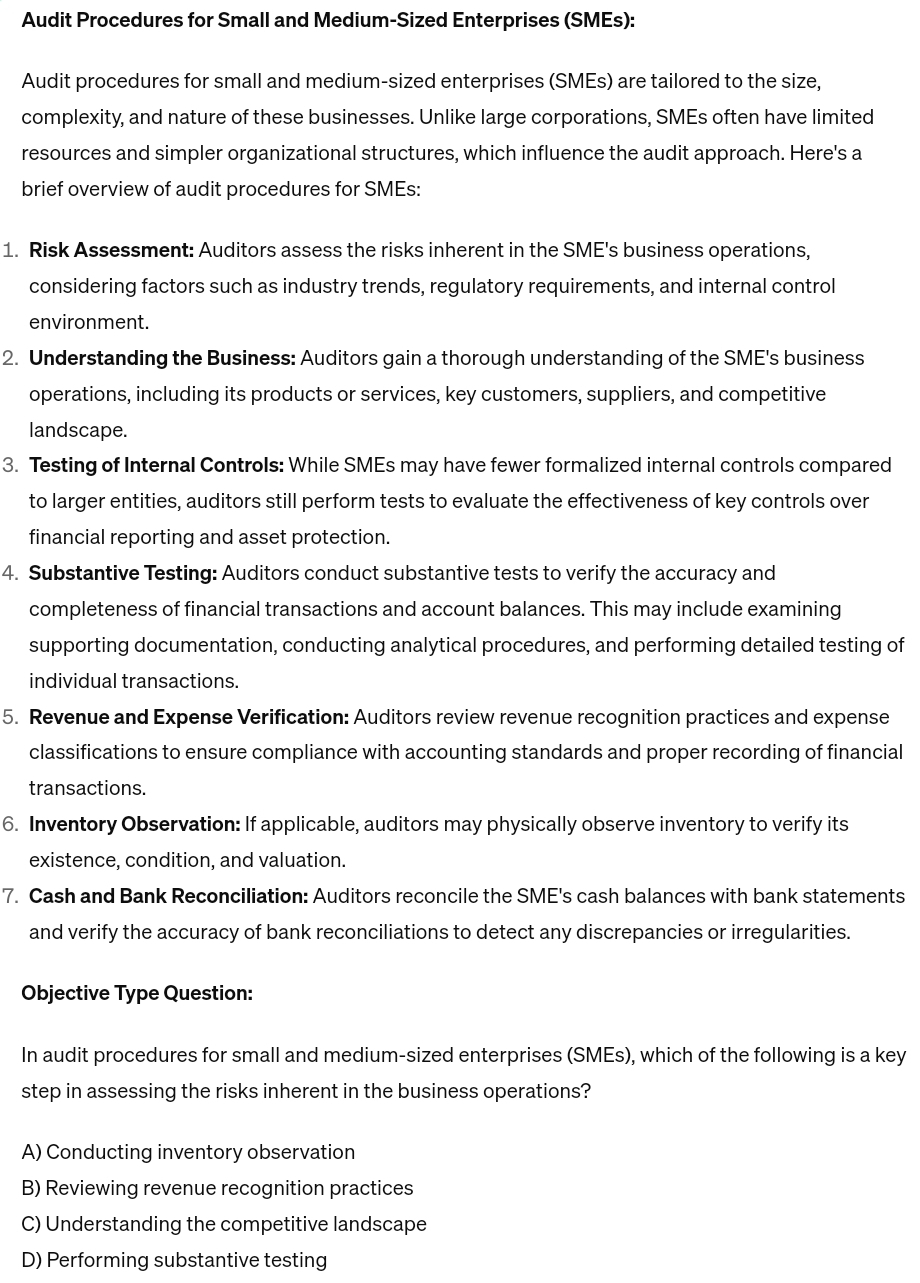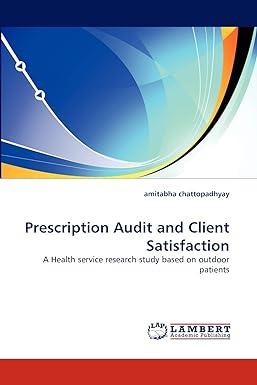Answered step by step
Verified Expert Solution
Question
1 Approved Answer
Audit Procedures for Small and Medium - Sized Enterprises ( SMEs ) : Audit procedures for small and medium - sized enterprises ( SMEs )
Audit Procedures for Small and MediumSized Enterprises SMEs:
Audit procedures for small and mediumsized enterprises SMEs are tailored to the size, complexity, and nature of these businesses. Unlike large corporations, SMEs often have limited resources and simpler organizational structures, which influence the audit approach. Here's a brief overview of audit procedures for SMEs:
Risk Assessment: Auditors assess the risks inherent in the SME's business operations, considering factors such as industry trends, regulatory requirements, and internal control environment.
Understanding the Business: Auditors gain a thorough understanding of the SME's business operations, including its products or services, key customers, suppliers, and competitive landscape.
Testing of Internal Controls: While SMEs may have fewer formalized internal controls compared to larger entities, auditors still perform tests to evaluate the effectiveness of key controls over financial reporting and asset protection.
Substantive Testing: Auditors conduct substantive tests to verify the accuracy and completeness of financial transactions and account balances. This may include examining supporting documentation, conducting analytical procedures, and performing detailed testing of individual transactions.
Revenue and Expense Verification: Auditors review revenue recognition practices and expense classifications to ensure compliance with accounting standards and proper recording of financial transactions.
Inventory Observation: If applicable, auditors may physically observe inventory to verify its existence, condition, and valuation.
Cash and Bank Reconciliation: Auditors reconcile the SME's cash balances with bank statements and verify the accuracy of bank reconciliations to detect any discrepancies or irregularities.
Objective Type Question:
In audit procedures for small and mediumsized enterprises SMEs which of the following is a key step in assessing the risks inherent in the business operations?
A Conducting inventory observation
B Reviewing revenue recognition practices
C Understanding the competitive landscape
D Performing substantive testing

Step by Step Solution
There are 3 Steps involved in it
Step: 1

Get Instant Access to Expert-Tailored Solutions
See step-by-step solutions with expert insights and AI powered tools for academic success
Step: 2

Step: 3

Ace Your Homework with AI
Get the answers you need in no time with our AI-driven, step-by-step assistance
Get Started


